F2A Buffalo
Genesis & Design
Le F2A Buffalo de la Brewster Aeronautical Corporation, fut le premier chasseur monoplan américain à servir sur les porte-avions américains, même si sa carrière y fut très courte. C'est en 1935, que l'US Navy avait placé un appel d'offre pour obtenir un chasseur embarqué, afin de remplacer l'obsolète biplan Grumman F3F. Le prototype XF2A-1 fut développé par l'équipe de Dayton T. Brown. Il fut dans un premier temps opposé au Grumman XF4F-1, un biplan classique à moteur radial à double étage. Ensuite la Navy fit entrer dans la compétition le Seversky P-35 qui fut rapidement abandonné car le prototype ne parvint jamais à dépasser les 430 km/h. Le prototype XF2A-1 fit son premier vol le 2 décembre 1937 et il prit de suite une grande avance sur le biplan de chez Grumman. Le XF4F-1 dans sa version biplan fut donc abandonné, mais l'avion refera son apparition plus tard en tant que monoplan cette fois-ci.
The F2A Buffalo Brewster Aeronautical Corporation, was the first Americanmonoplane fighter to serve on the U.S. aircraft carrier, even if its career there was very short. In 1935, the U.S. Navy had placed a tender for a carrier-borne fighter to replace the obsolete Grumman F3F biplane. The XF2A-1 prototype was developed by the team of Dayton T. Brown. It was initially opposed to Grumman XF4F-1, a conventional biplane with dual stage radial engine. Then the Navy ushered in the competition the Seversky P-35, which was quickly abandoned because the prototype was never able to exceed the 430 km/h. The XF2A-1 prototype made its first flight December 2, 1937 and took away a far advance on the biplane of Grumman. The XF4F-1 in its biplane configuration was therefore abandoned, but the aircraft will reappear after as monoplane.
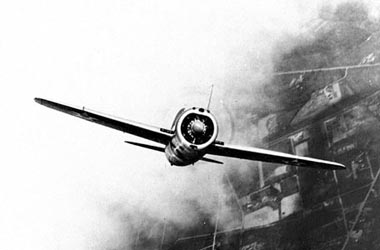 |
Brewster XF2A-1 prototype |
src: Wikipédia |
Le prototype de chez Brewster avait un fuselage trapu tout en métal, avec une implantation médiane des ailes et disposait de fonctionnalités avancées, bien que les gouvernes encore recouvertes de tissus. Il possédait aussi un train principal rétractable de façon hydraulique et une roulette de queue partiellement rétractable, ainsi qu'une verrière avec un encadrement rationnalisé. Comme la plu part des avions de cette époque, le prototype manquait cependant de protection pour le pilote et les réservoirs n'étaient pas auto-obturants. La capacité de ces derniers n'était que de 606L et approvisionnait un moteur radial Wright R-1820-22 Cyclone à simple étage, développant 950 cv. L'avion possédait un taux initial de monté impressionnant de 838 m/min et une vitesse de pointe de 447 km/h à 16000-ft (4879 m) qui sera boisée à 489 km/h après quelques améliorations effectuées sur le capot et les entrées d'air pour le refroidissement du carburateur et de l'huile. Avec seulement un compresseur à un seul étage , les performances à haute altitude était assez médiocres. L'armement était composé d'une mitrailleuse Browning de 12.7 mm (.50-caliber) approvisionné avec 200 projectiles et une mitrailleuse Browning de 7.62 mm (.30-caliber) approvisionné avec 600 projectiles, toutes deux montées dans le capot moteur.
L'US Navy passa commande de 54 exemplaires du désormais Brewster F2A-1 et la production débuta en juin 1938. Le modèle de série était désormais propulsé par un moteur radial Wright R-1820-34 Cyclone de 940 cv et était doté d'une plus grande dérive. L'armement initial était complété par deux mitrailleuses Browning de 12.7 mm (.50-caliber) montées dans les ailes. L'avion comprenait en plus divers équipements supplémentaires pour un service sur les porte-avions. Ces ajouts avaient une incidence néfaste sur les performances, ainsi le taux initial de monté n'était plus que de 792 m/min. En raison de retards dans la production la firme Brewster ne livra à l'US Navy que 11 appareils, le reste étant cédé à la Finlande sous la désignation de B-239 (version d'exportation modifiée).
The prototype of Brewster was a stocky body all metal , with a median wings implantation and had advanced features , although fins still covered tissue . It also had a hydraulically retractable main landing gear and partially retractable tail wheel and a canopy with a streamlined frame. Like most aircraft from that time, however, the prototype lacked protection for the pilot and self-sealing tanks. The capacity of these was only 606L and supplied a radial engine Wright R- 1820-22 Cyclone single stage , developing 950 hp . The aircraft had an impressive initial rate of climb of 838 m/min and a top speed of 447 km/h to 16,000-ft (4879 m) which is boosted to 489 km/h after some improvements made on the hood and oil/carburetor cooling intakes. With only a single stage supercharger, the high-altitude performance was quite poor. The armament consisted of a Browning machine gun 12.7 mm (.50-caliber) supplied with 200 rounds and a Browning machine gun 7.62 mm (.30-caliber) supplied with 600 rounds , both mounted in the hood.
The U.S. Navy placed an order for 54 copies of the Brewster F2A-1 now and production began in June 1938. The production model was now powered by a radial engine Wright R-1820-34 Cyclone 940 hp and was equipped with a larger fin. The initial armament was supplemented by two machine guns Browning 12.7 mm (.50-caliber) mounted in the wings. The aircraft included various additional equipment in addition to a service on aircraft carriers. These additions had a negative impact on performance, and the initial rate of climb was more than 792 m/min. Due to delays in the production firm Brewster delivered to the U.S. Navy 11 aircraft only, and the remainder being provided to Finland under the designation B-239 (modified export version).
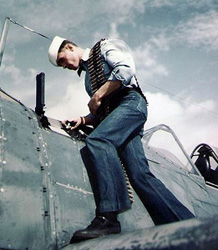 |
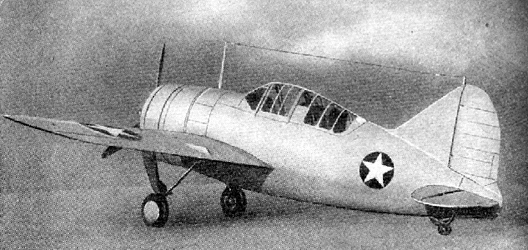 |
Ammo Loading. |
Brewster F2A-3 Buffalo fighter |
src: Wikipédia |
src: WWII
Vehicles |
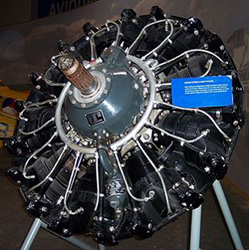 |
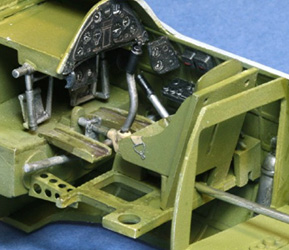 |
Curtiss-Wright R-1820 Cyclone Radial
Engine |
Cockpit |
src: Wikipédia |
src: ? |
Afin de remplacer les appareils perdus au bénéfice de la Finlande, l'US Navy commanda 43 nouveaux appareils d'une nouvelle version, le F2A-2 plus puissant. Le F2A-2 était désormais équipé par un Wright R-1820-40 développant 1200 cv. Il était aussi équipé d'une meilleure hélice mais était encore dépourvu de blindage pour le pilote et de réservoirs auto-obturants. Le F2A-2 sera équipé de 4 mitrailleuses de 12.7 mm (.50-caliber) Browning (2 dans le capot moteur et deux dans les ailes) et deux porte-bombes pour des bombes de 45.36 kg. Le moteur plus puissant lui assurait des performances nettement meilleures par rapport au précédent. gain de puissance était notable, mais était contrebalancé par une augmentation de poids tout aussi notable et la vitesse de pointe atteignait seulement les 520 km/h à 16500-ft (5029 m). Cependant comme le F2A-1 la grande majorité des F2A-2 de la commande initiale, sera détournée en faveur de la Belgique. Cependant aucun de ces appareils ne purent être livrés à temps avant l'invasion du pays par l'Allemagne et ils furent au final livrés aux Français et surtout aux Britanniques. Une deuxième contrat fut donc signé et 43 nouveaux appareils seront livrés à l'US Navy. Les deux premiers modèles de Buffalo furent appréciés par les premiers pilotes de l'US Navy et du Marine Corps (parmi lesquels un certain Papyrus Boyington) qui apprécièrent sa maniabilité. L'avion selon Pappy Boyington, quoique peu rapide pouvait voltiger dans une cabine de téléphone ... (sic)., en raison d'une charge alaire assez faible.
Le Buffalo avec le F2A-3 subira une utlitme tentative d'amélioration. Cette version fut conçue en tant que chasseur/avion de reconnaissance à long rayon d'action, doté désormais de réservoirs plus grands et surtout auto-obturants et d'un blindage pour le pilote. Ces changements augmentèrent le poids de l'avion de plus de 227 kg sans que la puissance du moteur soit amélioré. De plus l'appareil pouvait transporter un réservoir supplémentaire largable de 300 L (poids de 227 kg) et l'emport en munitions était aussi plus important. Cela influença négativement la vitesse de pointe et le taux de montée ainsi que la manoeuvrabilité du petit chasseur. L'amélioration n'était donc guère au rendez-vous malgré une meilleure autonomie ou protection. Le poids supplémentaire mettait à mal également le train d'atterrissage ce qui augmenta les accidents lors des appontages. Un total de 108 appareils fut commandé en janvier 1941 pour servir sur les porte-avions de l'US Navy et également pour le Marine Corps. Ils serviront notamment sur les porte-avions Saratoga et Lexington.
To replace aircraft lost for the benefit of Finland, the U.S. Navy ordered 43 new aircraft of a new version, the F2A-2 more powerful. The F2A-2 was now equiped by a Wright R-1820-40 developing 1200 hp . It was also equipped with a best propeller but was still without armor for the pilot and self-sealing fuel tanks . The F2A-2 will be equipped with four machine-guns of 12.7 mm (.50-caliber) Browning (2 in the hood and two in the wings) and two bomb-carrier for bombs of 45.36 kg (100-pdr). The most powerful engine assured it significantly better performance compared to the previous . Power gain was significant, but was offset by an increase in weight equally notable and top speed reached only 520 km/h to 16500-ft (5029 m). However, as the F2A-1 the vast majority of F2A-2 of the initial order will be diverted in favor of Belgium. However, none of these aircraft could be delivered in time before the country was invaded by Germany and they were ultimately delivered to the French and especially the British. Thus a second contract was signed and 43 new aircraft will be delivered to the U.S. Navy . The first two Buffalo models were appreciated by the first pilots of the U.S. Navy and Marine Corps (including Papy Boyington) who appreciated its maneuverability. Aircraft according Pappy Boyington , though not fast could turn and roll in a phone cabin ... , due to a relatively low wing loading.
Buffalo with F2A-3 undergo a utlitme attempt to improve the model. This version was designed as a long range reconnaissance-fighter , now with larger and especially self-sealing fuel tanks and shielding for the pilot. These changes increased the weight of the aircraft over 227 kg without engine power is enhanced. In addition, the aircraft could carry a additional drop tank of 300L (weight 227 kg) and carrying ammunition was also higher . This negatively influenced the speed and rate of climb and maneuverability of the little fighter. The improvement was therefore not at the rendezvous despite greater autonomy or protection. The extra weight also began to hurt the landing gear which increased accidents during landings . A total of 108 aircraft was commissioned in January 1941 to serve on aircraft carriers of the U.S. Navy and also for the Marine Corps like the aircraft carrier Saratoga and Lexington.
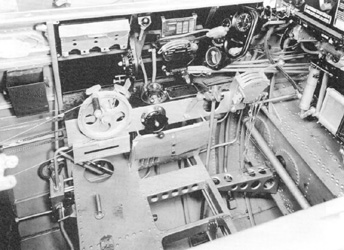 |
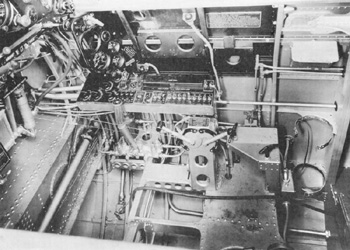 |
|
Cockpit |
|
|
src: ? |
|
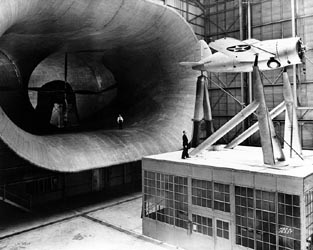 |
F2A in Langley wind tunnel, 1938. |
src: Wikimédia |
Cependant à l'orée de la deuxième guerre mondiale la marine américaine était désormais plutôt désenchantée par les performances jugées obsolètes du Buffalo, mais aussi par les incessants retards de production et problèmes de gestion de la Brewster Aeronautical Corporation. L'ultime commande du Buffalo fut donc faite principalement pour maintenir les lignes de production de cette firme en état de fonctionner. Elles serviront plus tard pour produire les Corsairs destinés au Corps des Marines ainsi que les bombardiers en piqué Buccaneer/Bermuda. Le chasseur de Brewster avait besoin désormais d'un moteur plus puissant et donc plus imposant. Malheureusement, la cellule du Buffalo ne permettait pas cette installation et avant même la livraison du premier F2A-3, la Navy décida d'abandonner tout futur développement sur ce modèle. Les Buffalos de la Navy furent vite considérés comme avions de seconde ligne et certains furent cédés au Marine Corps. Ce dernier déploya deux escadrons de F2A-3s dans le Pacifique (basés à Palmyra Atoll et Midway Island). Ceux restés en service sur les porte-avions, manquèrent de peu d'être utilisés au combat au sein d'une force de secours envoyée vers l'île de Wake ... mais cette force fut retirée avant la fin de la mission. Au final ces appareils furent transférés dans des escadrons de formation pour l'écolage des pilotes.
However, on the dawn of World War II the U.S. Navy was now rather disillusioned by the performance deemed obsolete of Buffalo, but also by the constant production delays and management problems of the Brewster Aeronautical Corporation. The ultimate order of Buffalo was therefore made mainly to keep the production lines of the company in action. They later used to produce the Corsairs for the Marine Corps and dive bombers Buccaneer / Bermuda . The Brewster fighter now needed a more powerful and therefore more imposant engine. Unfortunately , the Buffalo body did not allow the installation and before delivery of the first F2A-3 , the Navy decided to abandon any further development on this model. The Buffalos of Navy were soon regarded as second-line aircraft and some were transferred to the Marine Corps. USMC deployed two squadrons of F2A-3s in the Pacific (based in Palmyra Atoll and Midway Island). These remained in service on aircraft carriers, fail of few to be used in combat in a relief force sent to Wake Island ... but this force was withdrawn before the end of the mission. Ultimately these aircraft were transferred to training squadrons.
Drawings |
Sources: